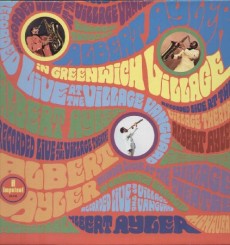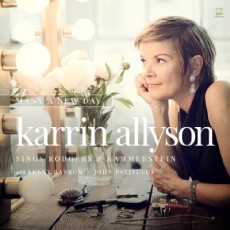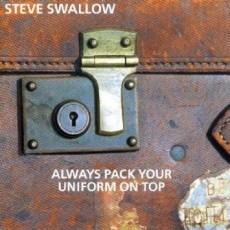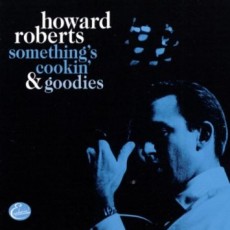
Daily Dose Of Jazz…
Donald Ayler was born in Cleveland Heights, Ohio on October 5, 1942, the younger brother of saxophonist Albert Ayler. He took up the trumpet as a child and went on to work with his brother in the mid-1960s but in 1967 had a nervous breakdown, which affected his brother’s life as well.
In 1970 his brother’s death affected him deeply. After that he worked with a septet in Florence but never led a recording session of his own. To this day, Donald remains best known for his jazz performance and recordings with his brother Albert.
Trumpeter Donald Ayler, who played in the free, avant-garde and mainstream genres of jazz, suffered a sudden heart attack on Sunday October 21, 2007, and passed away at home in Northfield, Ohio.
More Posts: trumpet

NEW FALL SEASON ALBUMS & PERFORMANCES / NYC
AACM 50TH ANNIVERSARY FESTIVAL The Association for the Advancement of Creative Musicians, a groundbreaking institution for American experimental music, has been celebrating its 50th anniversary this year, with events both in and beyond Chicago, its city of origin. This concert series, presented by the association’s New York chapter on four consecutive Fridays in October, will feature avant-garde titans like the pianist Muhal Richard Abrams and the saxophonist Roscoe Mitchell, in an improvised duet (Oct. 9); the trumpeter Wadada Leo Smith, leading a quintet (Oct. 16); and the trombonist and electronic musician George Lewis, with an ensemble called Impromptus (Oct. 23).
AFRO-LATIN JAZZ ORCHESTRA Led by the pianist and composer Arturo O’Farrill, this powerhouse large ensemble has been focused on furthering a musical dialogue with Cuba in recent years, to excellent effect. The coordinates shift slightly for “Jazz Across the Americas: Venezuela,” which will inaugurate the orchestra’s fall season at Symphony Space Oct. 1-2. symphonyspace.org.
ALAN BERGMAN “Lyrically, the Songs of Alan and Marilyn Bergman”: The Hollywood songwriter may be his own best interpreter. Birdland, Oct. 12; birdlandjazz.com.
BRAD MEHLDAU In his justly celebrated solo concerts, the pianist Brad Mehldau often spirals outward from a theme, forming complex structures on the fly, with or without a clear tether to the given melody. This digressive, rhapsodic, trancelike approach illuminates the diverse body of music — originals, jazz standards and tunes by Radiohead, the Beatles and Brahms — on “10 Years Solo Live” (Oct. 16). It’s a boxed set culled from a decade of European concert recordings, to be released initially on eight LPs, and one month later in digital formats and on CDs. Nonesuch.
BRIC JAZZFEST The centerpiece of the first annual BRIC JazzFest, happening at the BRIC House complex in Downtown Brooklyn, is a two-day marathon of 16 overlapping sets, ranging from the vaulting ambitions of the tenor saxophonist Kamasi Washington to the clockwork intricacies of Dawn of Midi. (You’ll want to buy tickets early, and use the same strategy with regard to your arrival on the scene.) A separate kickoff concert, on Oct. 11, will feature the august bassist Ron Carter with his Golden Striker Trio, in collaboration with the painter and poet Danny Simmons. And a free concert on Oct. 13 will spotlight Jaime Woods, an emerging singer-songwriter with a foothold in gospel and soul. Through Oct. 16; bricartsmedia.org.
CHRISTIAN SCOTT ATUNDE ADJUAH “Stretch Music” (Sept. 18) is the new album by this firebrand trumpeter from New Orleans, who now resides in Harlem. It’s also a set of aesthetic principles — at heart, involving the elasticity of genres, including the one most of us know as jazz — and a rallying cry for Mr. Adjuah’s fierce young band, which also appears Oct. 2-3 at Harlem Stage, harlemstage.org. Ropeadope.
FRED HERSCH On “Solo,” the album he just released, Fred Hersch works in a sumptuously familiar setting, engaging alone with a piano on a stage. He’ll turn 60 in October, around the time that he presents his ambitious new multimedia work — “Rooms of Light,” a song cycle inspired by the medium of photography, created with the poet Mary Jo Salter — at Montclair State University. Then Mr. Hersch will settle in for a week at the Village Vanguard with his working trio, featuring John Hébert on bass and Eric McPherson on drums. “Rooms of Light,” Oct. 15-18, Kasser Theater, Montclair, N.J. Village Vanguard, Oct. 20-25, villagevanguard.com.
JANE MONHEIT “The Songbook Sessions: The Music of Ella Fitzgerald”: From starting out as a jazz-pop vocal prodigy, Ms. Monheit has matured into a trouper and sensitive interpreter. Birdland, Oct. 13-17; birdlandjazz.com.
JAZZ AT LINCOLN CENTER ORCHESTRA PLAYS MONK Thelonious Monk has been the subject of more than one repertory tribute by the Jazz at Lincoln Center Orchestra over the years, but this program — one of the organization’s few marquee events in the coming season, because of a scheduled renovation of Frederick P. Rose Hall — holds promise. Jazz at Lincoln Center’s artistic director, Wynton Marsalis, will host a concert of new arrangements by members of the ensemble; the featured guest is Joey Alexander, a preteen piano virtuoso whose appreciation of Monk’s music has been widely documented. Oct. 23-24, Town Hall.
JOHN SCOFIELD “Past Present” (Sept. 25) is an album title with more than one connotation for the guitarist John Scofield. For one thing, it’s a welcome reunion of his quartet of the early-to-mid 1990s, an elastic, swinging group with Joe Lovano on tenor saxophone and Bill Stewart on drums. (Larry Grenadier is the bassist for this go-round.) The deeper meaning, mostly implicit, is an elegy for Mr. Scofield’s son, who died of cancer two years ago — and whose outlook can apparently be credited for this music’s resolute lightness of spirit. (The quartet reconvenes Oct. 13-18 at the Blue Note Jazz Club; bluenote.net.) Impulse!/Universal Music Classics.
KARRIN ALLYSON The album “Many a New Day: Karrin Allyson Sings Rodgers & Hammerstein” (Sept. 18) tells you the main thing you need to know about Ms. Allyson’s new album, her first nonholiday release in four years. You should know at least a couple of more things: first, that she aces the tightrope walk of songbook reverence and jazz-vocal breeziness that often proves elusive on such an album; and second, that her sterling accompanists are the bassist John Patitucci and the pianist Kenny Barron. (She’ll appear with different partners Oct. 6-10 at Birdland.) Motéma.
KURT ELLING The formidable jazz singer swings Sinatra. Café Carlyle, Oct. 13-17.
More Posts: albums,performances

Daily Dose Of Jazz…
Steve Swallow was born October 4, 1940 in Fair Lawn, New York. As a child, he studied piano and trumpet before turning to the double bass at age 14. While attending a prep school, he began trying his hand in jazz improvisation. While attending Yale and studying composition he left oin 1960, settled in New York and began playing in Jimmy Guiffre’s trio with Paul Bley. By 1964 he was with Art Farmer’s quartet where he began to write and during this period his long association with Gary Burton’s various bands commenced.
The early 1970s saw Swallow switching exclusively to the five-string electric bass guitar, encouraged by his favorite drummer Roy Haynes. Along with Monk Montgomery and Bob Cranshaw was one of the firsts to do so. He was an early adopter of the high C string and use of the upper register.
In 1974-76 Steve taught at the Berklee College of Music, contributed several of his compositions to the Berklee students who assembled the first edition of The Real Book. He later recorded an album of the same name, with the picture of a well-worn, coffee-stained Real Book on the cover. By 1978 he became an essential and constant member of Carla Bley’s band and her romantic partner since the 1980s. He toured extensively with John Scofield in the early Eighties, returning to this collaboration several times over the years.
Swallow has consistently won the electric bass category in Down Beat yearly polls, both Critics’ and Readers’, since the mid-80s. His compositions have been covered by, among others, Bill Evans, Chcick Corea, Stan Getz, Gary Burton and Jim Hall, who recorded his very first tune, Eiderdown. He has performed or recorded with Don Ellis, Dave Douglas, Steve Kuhn, Pete La Roca, Joe Lovano, Michael Mantler, Gary McFarland, Pat Metheny, Paul Motian, Jimmy Raney, Zoot Sims, Tore Johansen and George Russell.
Bassist Steve Swallow, who performs in the genres of cool, fusion, avant-garde, free, post-bop and hard bop jazz, has fourteen albums to his credit as a leader an co-leader and continues to perform, compose, record and tour.
More Posts: bass

Daily Dose Of Jazz…
Mike Clark was born on October 3, 1946 in Sacramento, California. Most noted for playing in the Headhunters band headed up by Herbie Hancock since the mid-1970s. His performance on Hancock’s 1974 Thrust album and particularly the song “Actual Proof”, is often cited as one of the finest examples of the linear funk style of drumming.
Clark was also a member of the UK jazz-fusion outfit Brand X alternating behind the kit with Phil Collins between 1978-80. He has performed with Chet Baker, Vince Guaraldi, Fred Wesley, Woody Shaw, Wallace Roney, Eddie Henderson, Michael Wolff, Tony Bennett, Joe Henderson and Charlie Hunter, just to name a few.
Mike is known as one of the most sampled drummers in contemporary music and his beats have appeared on records by Prince, N.W.A., De La Soul and Janet Jackson, among others.
In addition to leading his own group, jazz, funk and fusion drummer Mike Clark is currently co-leader of a two-drummer band with Lenny White and is currently co-leading and touring with The Wolff and Clark Expedition. As an educator he continues to run clinics around the world.
More Posts: drums

Daily Dose Of Jazz…
Howard Roberts was born on October 2, 1929 in Phoenix, Arizona and began playing guitar at the age of 8. By the time he was 15 he was playing professionally locally. He moved to Los Angeles in 1950 and with the help of Jack Marshall he began working with musicians, arrangers and songwriters including Neal Hefti, Henry Mancini, Bobby Troup, Chico Hamilton, George Van Eps and Barney Kessell.
Around 1956 Troup signed Howard to Verve Records as a solo artist and he he decided to concentrate on recording. He recorded both as a solo artist and “Wrecking Crew” session musician, a direction he would continue until the early 1970s. He would go on to play guitar on television themes such as The Twilight Zone, The Munsters, Bonanza, The Brady Bunch, Green Acres, Get Smart, Batman, Beverly Hillbillies, Andy Griffith, Peter Gunn, Mannix, Dick Van Dyke, I Dream of Jeannie, The Odd Couple and Mission Impossible among others. He also performed the theme for the classic Steve McQueen film Bullitt.
In 1961, Roberts designed a signature guitar, which was originally produced by Epiphone, a division of Gibson. The Howard Roberts signature was borne by two other models made by Gibson: the Howard Roberts Custom and the Howard Roberts Fusion III.
By 1963, Roberts recorded Color Him Funky and H.R. Is A Dirty Guitar Player, his first two albums after signing with Capitol Records. They both featured the same quartet with Roberts (guitar), bassist Chuck Berghofer, Earl Palmer on drums and Paul Bryant alternating with Burkley Kendrix on organ. He would go on to record nine albums with Capitol before signing with ABC Records/Impulse Records.
Over the course of his career he recorded with David Axelrod, June Christy, Buddy Collette, Milt Jackson, Hank Jones, John Klemmer, Charles Kynard, Herbie Mann, Thelonious Monk, Lalo Schifrin, Bud Shank, Bob Cooper, Gabor Szabo and Larry Williams, to name a few. As a member of the Wrecking Crew, he was a part of Phil Spector’s ‘Wall of Sound’ and played guitar on some of the most famous songs in pop music history.
From the late 1960s, Roberts began to focus on teaching rather than recording. He traveled around the country giving guitar seminars, and wrote several instructional books. For some years he also wrote an acclaimed column called “Jazz Improvisation” for Guitar Player magazine. he developed accelerated learning concepts and techniques, which led to the founding of Playback Music Publishing and the Guitar Institute of Technology. As a co-founder of GIT, now known as the Musicians Institute, his philosophy remains an integral part of the curriculum.
Guitarist Howard Roberts, who played rhythm and lead guitar, bass and mandolin, passed away of prostate cancer in Seattle, Washington on June 28, 1992. His life in music inspired the opening of Roberts Music Institute in Seattle, Washington, which is currently owned by his son, Jay Roberts.



